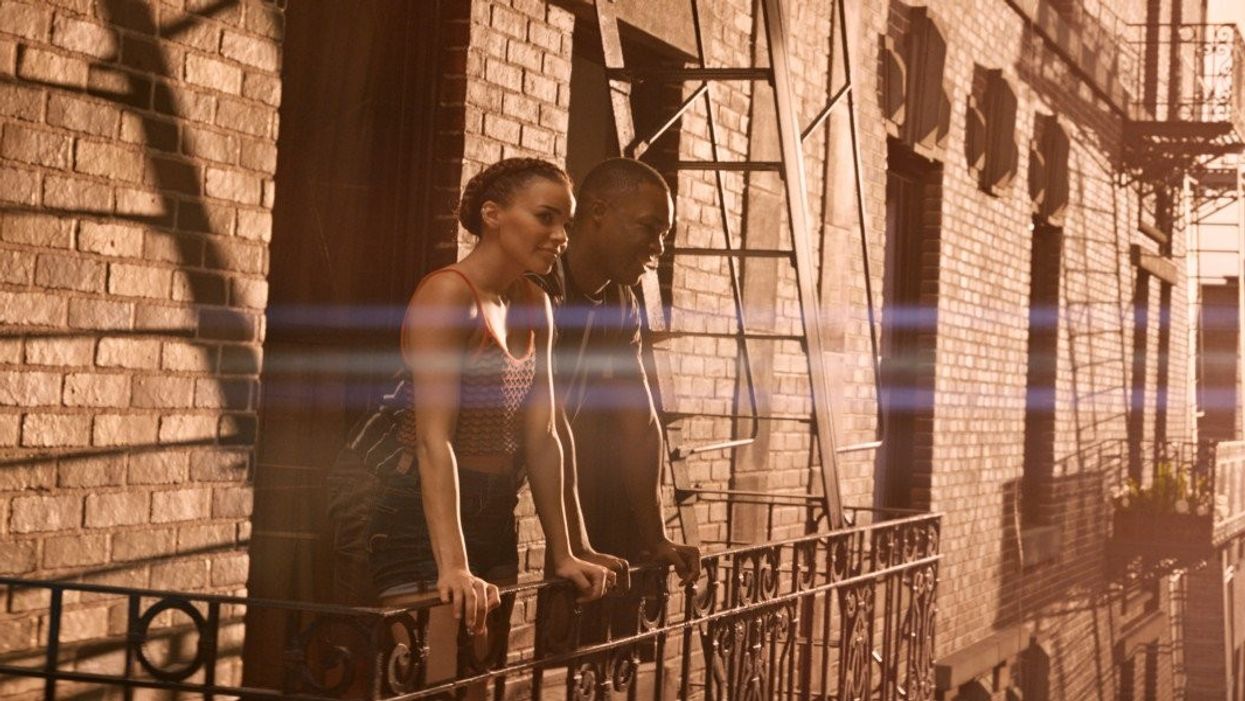Rotating Sets Aren’t Just for Action Movies Anymore
In the Heights' director, cinematographer, and choreographer break down how they created their rotating stage for their love story.

The musical of the summer, In the Heights,follows the diverse Latinx communities of Upper Manhattan through a story of love and dreams. A musical meant for the big screen has lots of amazing shots and dance sequences, all of them memorable in their way, but no moment tops the weightlessness of “When the Sun Goes Down.”
The film's director Jon M. Chu recently discussed how they created the scene on the Filmmaker Toolkit podcast. Cinematographer Alice Brooks and choreographer Christopher Scott also joined the discussion to go into full detail on how they created the magic in “When the Sun Goes Down.”
Chu, Brooks, and Scott all worked together to create many other dance sequences that make us dance along or wish we could be a part of the film’s world. They are responsible for the hit Step Up movies and the TV series The LXD: The Legion of Extraordinary Dancers.
The three came back together to make a film that captured all the ideas they’ve been developing for years, and one of those did include the iconic Nina and Benny’s sunset dance on the side of a building.
The idea started with a kiss. The trio was sitting in Chu’s apartment brainstorming ideas for what one of the numbers of In the Heights would look like, and the idea that kept popping up when they thought of the kiss was losing gravity. Scott said that the idea of the revolving room had been floating around in their creative discussions for 10 years or so, but they never had a moment for it until then.
“...[I]t did feel like when you say goodbye to the love of your life and not knowing where that may lead, sometimes you just want to be present and the rules of the world go away and float away,” is what Chu said on developing the sequence for “When the Sun Goes Down.” “And this idea that we could turn a building on its side, do it not just inside like Royal Wedding, but outside, and that these buildings that you walk by every day with these fire escapes could become benches, and the brick wall that has graffiti could turn into a ballroom floor... that was the most beautiful way to honor this neighborhood.”
To master this effect, the crew built a piece of building that folded down and clicked into the floor. As the building rotates, the camera slowly moves to hide the fact that the wall has tipped completely flat. At first, the trio thought that attaching the camera to the wall was the easiest way to capture the take. When they did the previsualization, they quickly realized they had to change their game plan.
The way they discovered their camera movement for the scene was to sit in the studio with the dancer and track the dancers the good old-fashioned way: with their iPhones.
This is how they learned that the best way to sell the anti-gravity scene was by making the first shot as long as possible. Once the wall was down, the shot was dead. To keep the shot alive, they used a second camera on a technocrane to capture the remaining 30 seconds.
Another factor that had to be considered was how the actors were going to sell the shot. To sell the shot, the actors had to learn how to shift their weight to make it look as if they were floating into the air. After hours of practice, the actors were able to shift their weight perfectly, and the whole scene was captured in one take.
The last key element to make the shot work was the magic of the sun setting perfecting through the George Washington Bridge. The shot was set in late June, weeks before the scene would be shot, during Manhattanhenge, the two-days-once-a-year when the sun lines up perfectly with the street and sets north of the bridge. The challenge was synchronizing the wall, dancers, and complicated camera moves with the difficulty of creating a perfect replica of the sun setting during Manhattanhenge.

The lighting source for the sky was LEDs attached to a dimmer board. The moment in the music where the wall started tilting, the lights started going right on cue. For the sun, Brooks used a 20k Fresnel on a crane that had to be timed perfectly with the music and the hydraulics for the wall. The special effects coordinator, Jeff Brink, created the technology for the wall and controlled many of the elements that made the shot work. A choreographer stood next to the special effects team to count out the beats to the dance so the team could get their timing down for when to shift the wall or change the lights.
In the end, the shot turned out better than expected. The final kiss between Nina (Leslie Grace) and Benny (Corey Hawkins) once they return to gravity finalizes that sequence as the best dance scene in 2021 so far. The moment feels surreal, yet grounded in that first-love feeling that we all know too well.
If your budget allows for it, try the rotating wall in your next project, and see if you’re able to replicate that feeling of euphoria.
What is your favorite film with a rotating set? Let us know in the comments below!
Source: IndieWire











